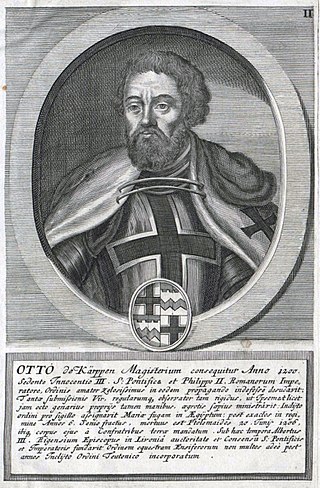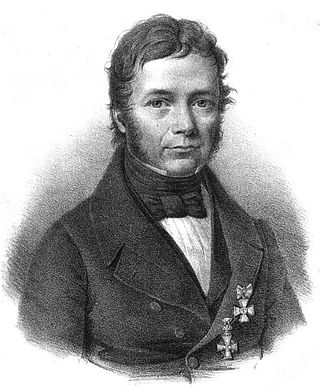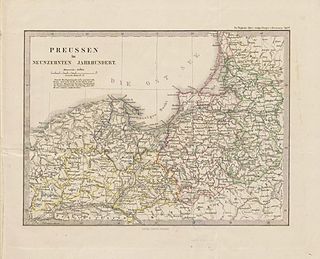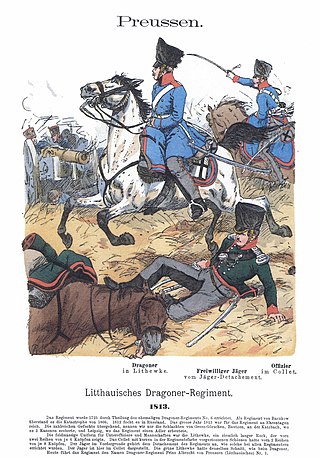Related Research Articles
Danzig law was the official set of records of the laws of city of Danzig (Gdańsk).

Otto von Kerpen was the second Grand Master of the Teutonic Knights.

The Grand Master of the Teutonic Order is the supreme head of the Teutonic Order. It is equivalent to the grand master of other military orders and the superior general in non-military Roman Catholic religious orders. Hochmeister, literally "high master", is only used in reference to the Teutonic Order, as Großmeister is used in German to refer to the leaders of other orders of knighthood.

Hans von Baysen or Jan Bażyński was a Prussian knight and statesman, leader of the Prussian Confederation and the first Polish governor of Royal Prussia.

Johannes Voigt was a German historian born in Bettenhausen, which today is situated in the district of Schmalkalden-Meiningen.

The city of Danzig (Gdańsk) was captured by the State of the Teutonic Order on 13 November 1308, resulting in a massacre of its inhabitants and marking the beginning of tensions between Poland and the Teutonic Order. Originally the knights moved into the fortress as an ally of Poland against the Margraviate of Brandenburg. However, after disputes over the control of the city between the Order and the King of Poland arose, the knights murdered a number of citizens within the city and took it as their own. Thus the event is also known as Gdańsk massacre or Gdańsk slaughter. Though in the past a matter of debate among historians, a consensus has been established that many people were murdered and a considerable part of the town was destroyed in the context of the takeover.

Constantine, Prince of Hohenzollern-Hechingen, was the last Prince of Hohenzollern-Hechingen. Constantine was the only child of Frederick, Prince of Hohenzollern-Hechingen and his wife, Princess Pauline of Courland, the daughter of the last Duke of Courland, Peter von Biron.
The Prussian estates were representative bodies of Prussia, first created by the Monastic state of Teutonic Prussia in the 14th century but later becoming a devolved legislature for Royal Prussia within the Kingdom of Poland. They were at first composed of officials of six big cities of the region; Braunsberg (Braniewo), Culm (Chełmno), Elbing (Elbląg), Danzig (Gdańsk), Königsberg (Królewiec) and Thorn (Toruń). Later, representatives of other towns as well as nobility were also included. The estates met on average four times per year, and discussed issues such as commerce and foreign relations.
The Treaties of Cölln and Mewe, concluded in 1454 and 1455, transferred the Neumark from the State of the Teutonic Order to the Electorate of Brandenburg. The Teutonic Knights had received the area as a pawn from Brandenburg in 1402, and as a possession in 1429. Financial shortages due to the onset of the Thirteen Years' War (1454–1466) forced Ludwig von Erlichshausen, Grand Master of the Teutonic Order, to pawn the Neumark to Frederick II, Elector of Brandenburg, by the Treaty of Cölln on 22 February 1454, and to subsequently sell it by the Treaty of Mewe on 16 September 1455.
The Jüngere Hochmeisterchronik, Croniken van der Duytscher Oirden, or Utrecht Chronicle of the Teutonic Order is a Middle Dutch chronicle of the Teutonic Order. It was written in or around the city of Utrecht in the Low Countries in several phases: around 1480, around 1491, and with some minor alterations after 1492. It has been referred to as “the final piece of the puzzle that is the official historiographic tradition of the Teutonic Order”. The anonymous chronicle was likely authored by the land commander of the Utrecht bailiwick of the Teutonic Order, Johan van Drongelen, in cooperation with his personal secretary Hendrik Gerardsz. van Vianen.

Max Pollux Toeppen, surname sometimes spelled Töppen was a German historian and educator.
The Tylzha is a 27-kilometre-long (17 mi) river in Kaliningrad Oblast discharging into the river Neman at Sovetsk which until 1946 was called Tilsit in accordance with it.
The Burgschule or Oberrealschule auf der Burg was a secondary school (Oberrealschule) located originally in central Königsberg, Germany, and later in the suburban Amalienau quarter. It was the fourth oldest school in the city, behind Altstadt Gymnasium, Kneiphof Gymnasium, and Löbenicht Realgymnasium.

"Christ ist erstanden" is a German Easter hymn, and is possibly the oldest Christian liturgical German song. It has inspired music by composers such as Ludwig Senfl and Heinrich Schütz through to modern composers such as Oskar Gottlieb Blarr and Enjott Schneider, and has appeared in 45 hymnals, including the current German Catholic and Protestant hymnals. Translations and paraphrases include a version by Catherine Winkworth which has appeared in 231 hymnals. "Christ ist erstanden" also inspired Martin Luther to write "Christ lag in Todes Banden", deriving the melody from it.

Schaaken Castle is a ruined castle originally built for the Teutonic Knights, in Nekrasovo, Kaliningrad Oblast, Russia. It was extensively altered in the 19th century and has become a ruin since World War II.

The Teutonic Order Research Centre, is a research institution at the Julius-Maximilian University of Würzburg. It is dedicated to the history of the Teutonic Order, with a particular focus on the regional history of Franconia.
Karl Wilhelm Franz Brümmer was a German educator and lexicographer.
Landmeister of Prussia was a high office in the Teutonic Order. The Landmeister administered the land of Prussia of the Teutonic Order. It was in existence as a separate office from 1230 to 1309, later being held in union with the office of Grand Master until 1525.

1st Lithuanian Dragoon Regiment was a dragoon regiment of the Royal Prussian Army that had a Prussian Lithuanian-majority. The regiment was formed in 1717 and disbanded in 1919. This regiment was one of the eldest in the whole Prussian army.

The County of Steinfurt, originally the Lordship of Steinfurt, was a historic territory of the Holy Roman Empire in the Munsterland. It existed from roughly 1100 until 1806.
References
- ↑ J. Voigt: Geschichte Preussens, von den ältesten Zeiten bis zum Untergang der Herrschaft des Deutschen Ordens (History of Prussia: from the earliest times to the downfall of the Teutonic Order); vol. 4, p. 38.
- ↑ "Kreisgemeinschaft Tilsit-Ragnit e.V.: Erste Ansiedlungen in der Urwildnis (First settlements in the virgen wilderness)". Archived from the original on 2014-11-29. Retrieved 2013-01-06.